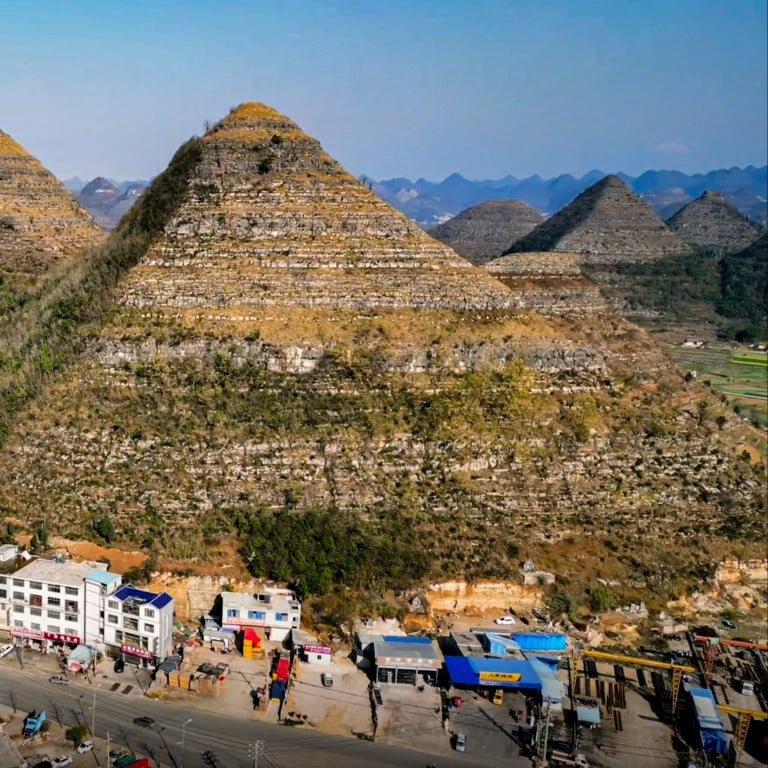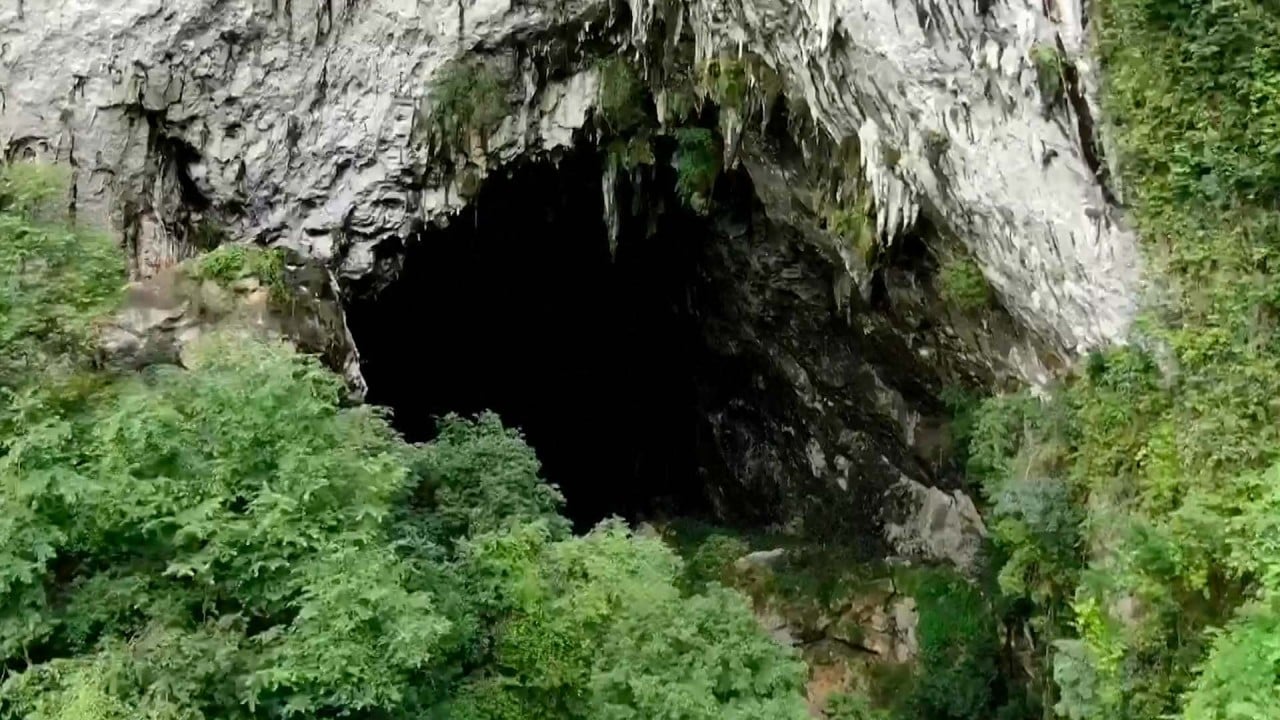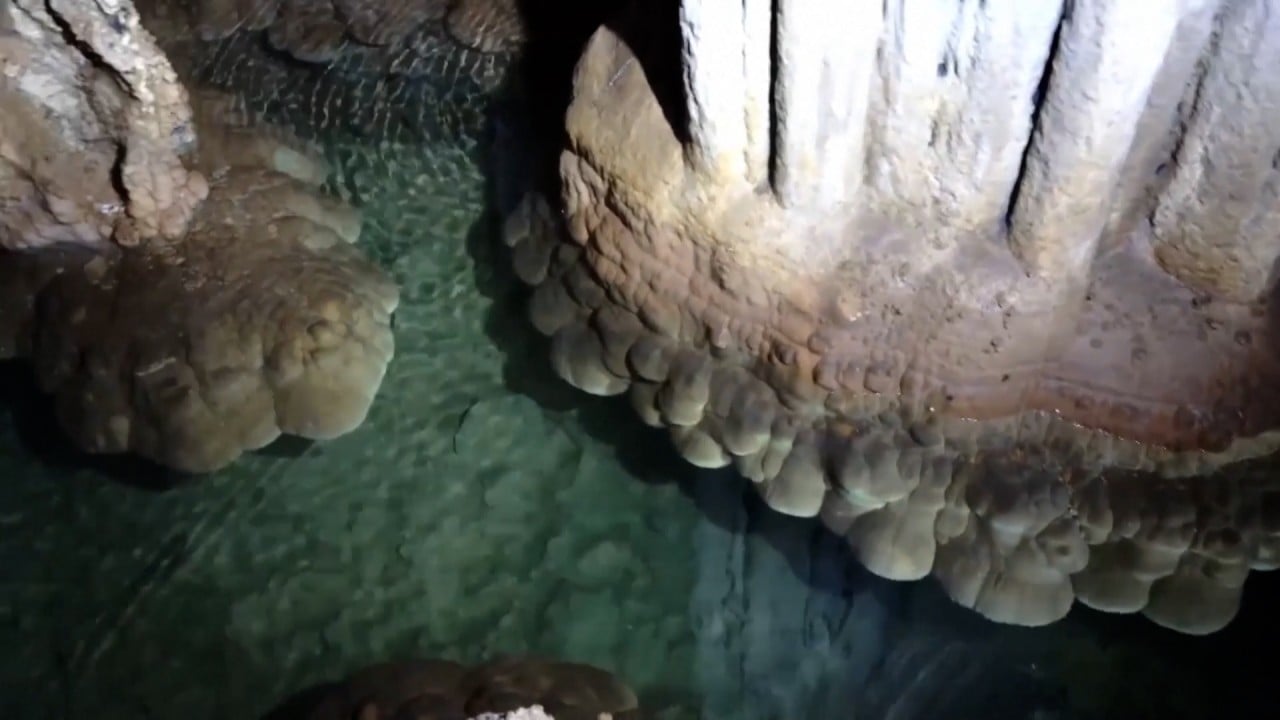
Ancient mystery: netizens captivated by pyramid formations in southern China
- Viral drone footage sparks online debate about the origin and purpose of Guizhou wonders
- Guizhou Normal University professor explains how they came to be and the forces behind their striking stacked-brick effect
Amid the lush landscape of Guizhou in China a drone video shows a natural wonder: a series of mountains with a striking resemblance to the Egyptian pyramids.
The footage has captivated social media users worldwide, and its virality has sparked online debate.
Some speculate that the mountains in Anlong county conceal the tombs of ancient emperors while others believe they were crafted by the same extraterrestrial beings purported to have built the pyramids of Egypt.
Dispelling these myths, Professor Zhou Qiuwen, a geologist from Guizhou Normal University, provided a scientific explanation in a report by Eyesnews, a news agency under the auspices of the Guizhou Daily, on Sunday.
According to Zhou, these natural “pyramids” are not artificially constructed nor are they an ancient tomb site. Instead, they are testament to nature’s craftsmanship.
Guizhou, a province in the interior southwest region of China, is known for its rich natural beauty and diverse landscape. The average elevation of the province is around 1,100 metres (3,600 feet), with 92.5 per cent of its area consisting of mountains and hills.
How to understand and avoid pitfalls of China’s so-called zero-dollar tourism
The region is home to numerous mountain ranges, with peaks rising steeply and valleys deeply etched, stretching far and wide across the landscape.
The view in the video is characterised by karst topography, a landscape formed from the dissolution of soluble carbonate rocks. The cone-shaped mountains are the result of rock formations dissolving.
Zhou explained the process in the report: “The vertical erosion by water has led to the original expansive rock masses being segmented into independent units. As this erosive process continues, the rocks at the top undergo significant dissolution, while those at the base are relatively less affected, resulting in sharp peaks atop wider bases”.
Similarly, the layered appearance of these formations is linked to the rocks’ genesis.
“The mountains in Guizhou are made of dolomite rocks that are over 200 million years old, from a time when the area was mostly under water. These rocks formed in the sea, as minerals dissolved in the water and crystallised into solid rock,” he said.
“Due to periodic changes in climate, geological structures and other environmental factors, the rock formation process was repeatedly interrupted and restarted. This created rocks with clear layers,” he added.
The video highlights features on the mountain surfaces that look like stacked bricks that Zhou said were also the result of natural erosive sculpting.
‘Painless mountain climbing’: scenic China hillside escalators spark controversy
“Some rock surfaces initially had fine cracks; water erosion among these cracks was not strong enough to dissolve the entire rock mass but sufficient to cause segmentation, thereby creating a block-like appearance.”



